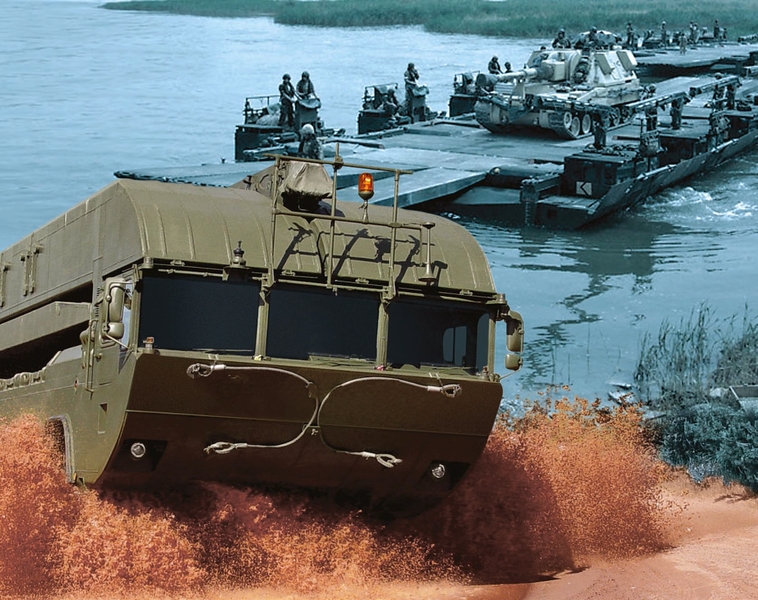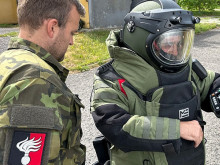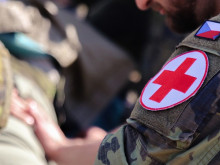Contemporary bridge and pontoon systems – modernization options for the Czech military engineering vehicles and equipment
The Czech Army plans several major modernization and acquisition programs to be implemented in the coming years. For land forces, the acquisition of 210 pieces of tracked armoured fighting vehicles is surely the most important one. Later on, the army will also need to address modernization of its main battle tanks. New tracked vehicles will be a major challenge also for military logistics and its engineer support and mobility support.
First and foremost, the new infantry fighting vehicles and their special versions as well as the new tanks will be much heavier than the hitherto used technique remembering the times of the Warsaw Pact. In the near future, the Czech Army will therefore have to modernize its mobile bridge and pontoon systems. Having served been for several decades, these systems won´t be applicable to the new armoured vehicles. Based in Šternberk, the Czech Excalibur Army company is ready to offer the Czech Army several bridge laying vehicles and bridge systems. They either originated in its development department or they are the result of cooperation with the company´s traditional partner - General Dynamics European Land Systems. We interviewed Pavel Doško, Excalibur´s Army business development director, on the issue of modernizing the Czech army´s bridge systems, and on development and production capacities of Excalibur Army.
1. Your company has developed two new AM-50 EX and AM-70 EX bridge laying vehicles in recent years. The AM-70 EX was introduced only on IDET 2019 fair. What are the parameters of both vehicles and what is their purpose?
.jpg)
Picture: AM-50 EX bridge laying vehicle | EA
These are mobile bridges placed on a Tatra Force 8x8 platform. Their purpose is to quickly bridge dry and water obstacles to ensure the movement of supported units. Each vehicle is fitted with a single bridge section of 13.5 m length which is installed in a few minutes, allowing another vehicle to append a new one (using a 2-6 meter retractable support). Thus, wide obstacles may be crossed.
The AM-70 EX is based on our proven AM-50 EX model, the main difference being the bridge load capacity, which complies with the MLC 70 according to the STANAG 2021 alliance standard. The MLC 70 can be simply described as 63.5 tons of load capacity for tracked vehicles and 73 tons for wheeled vehicles. Technically, the vehicle is also redesigned and generally improved based on practical experience in the manufacture and operation of the former AM-50 EX model by our customers and the requirements of the Czech army.
Picture: AM-70 EX bridge laying vehicle | EA
2. Both vehicles are based on the concept of the AM-50 bridge systems used by the Czech Army. Why do you build up on this concept? How complicated would be a switch from the older technology to AM-70 EX for the Czech combat engineers?
This is a unique concept with a great potential. Compared to competing solutions, this concept offers the greatest flexibility possible. We are able to adapt to the length of the obstacle and connect other bridge fields as needed, which is not usually possible with competitive solutions. Also, the bridge deck has full surface and is not equipped with rails, as is common with other solutions, making it easy to use for civilian rescue operations. However, only the main concept has been preserved, the entire bridge and laying equipment was newly designed by our developers, and also the parameters of the bridge decks differ. It is definitely not a refurbishment of old bridges, as it is sometimes wrongly described.
For Czech combat engineers, switching to the AM-70 EX would be very easy. The principles of the bridge they are used to, are preserved. At the same time, the whole solution represents a generational leap in many aspects. The main change is of course the new Tatra Force 8x8 chassis, but also a modern control system with automated bridge laying elements, modern electronics, hydraulics or a new maintenance system. At the same time, we can offer other tailor-made solutions, such as a short or long armoured cabin for crew, a more powerful engine, automatic transmission, day and night camera system or a rangefinder. For one foreign customer, we supply weapon stations located on the cab of vehicles.
Picture: AM-70 EX bridge laying vehicle | EA
Switching to the AM-70 EX would also be much easier than to the AM-70, a prototype made only in one specimen approximately 10 years ago for the Czech Army. So, possible re-production of AM-70 is itself associated with a number of question marks. The construction of the AM-70 is much more complicated because it uses complex hydraulic elements, while our AM-70 EX maintains the principle of reliable and proven mechanical elements for bridges laying and loading. Moreover, the AM-70 EX bridges are compatible with older generations of bridges, i.e. those currently used by the Czech Army, despite being 30 cm wider, which is more advantageous for the new perspective machinery. The transition to the new engineer military vehicles and equipment would therefore be smooth from this perspective.
3. Excalibur Army developed both systems by itself: do you respond to the future needs of the Czech Army? Do you also have the capacity to produce and provide service, lifetime technical support, training, etc.?
We developed the AM-50 EX model based on the requirements of a foreign customer. AM-70 EX is a follow-up model developed mainly to meet the future needs of the Czech Army. We have not only adequate production capacities, but above all, we are experienced in the production of these vehicles and we are equipped for their comprehensive support. This applies to the deployment process, operators training, and subsequent service.
In fact, our service facilities are used by the Army of the Czech Republic even today, mostly for the AM-50 and other equipment´s service: our engineers are skilled to maintain AM-50 vehicles, despite their age, in operation. All these services are usually provided also for international customers, which is linked with business trips to distant corners of the world.
4. How do you test the vehicles and verify their functionality, serviceability, load capacity and other parameters? Do specialists from the military environment work with you?
The vehicles undergo regular in-house tests and checks, and they are again tested in the course of handovers to the customers. In fact, the best test is a operation run by their new owners. For instance, we carried out demanding testing procedures for the AM-70 EX in cooperation with the state organisation Vojenský technický ústav (Military Technical Institute), specifically with its branch office for land forces in Vyškov.
Picture: AM-70 EX bridge laying vehicle | EA
Unfortunately, the cooperation with the military is very limited. It is not that we do not want to, but that it is legally almost impossible. It is, of course, very unfortunate, because the involvement of military experts would make it easier to develop solutions that exactly match what the military requires. However, we carefully absorb any information and comments at various exhibitions or fairs, as it is a valuable feedback for us.
5. The vehicles manufactured by Tatra Trucks are used as the carriers for the AM-50 EX and AM-70 EX bridge systems. What chassis can be used and what cabs and other equipment can be installed on the vehicles?
These are typical military Tatra concept chassis with 8x8. It is a very modular solution that can be adapted to the customer's needs, whether by choosing an engine, gearbox or cab. The AM-70 EX can also be equipped with an armoured cabin of protection level 2 according to the STANAG 4569 alliance standard, be it either a short two-door one or a long four-door one.
6. Are the bridge vehicles you developed usable for the NATO? Is it possible to operate them together with our allies' vehicles? Will it be possible to use them for the current vehicles of the Army of the Czech Republic, which will certainly remain in service for several years?
Yes, the vehicles are designed for use in the NATO and in compliance with its military standards. The same applies to the production. The AM-70 EX can be operated with our allies and NATO technology in terms of load capacity. In addition, the AM-70 EX is also compatible with the current equipment used by the Czech Army, and also with the vehicles that the Czech military could introduce into its equipment in the future. However, the bridge system carried by the AM-70 EX cannot be connected to the NATO mobile armour bridges, as their construction, unlike the AM-70 EX, is not designed to connect multiple parts. Slovakia is an exception, as its army, like the Czech one still operates the old AM-50 bridge systems.
7. The AM-70 EX is a new product introduced for the first time at the end of 2018 year at the Allied Engineering Center in Ingolstadt, Germany. What were the reactions to it? Do you offer AM-70 EX and AM-50 EX to NATO armies or to non-Alliance customers?
Responses to the first performance of the AM-70 EX were very positive, and the system also attracted attention of the Western armies´ representatives, who were positively surprised by its flexibility. Both the AM-70 EX and AM-50 EX are actively being offered to all potential customers, even though we have a difficult position in the Alliance over the years due to the established position of our competitors on the Western market. On the other hand, we have an advantage over many customers thanks to the unique technical concept and its economic side. We´ve noticed that potential customers from both the NATO and outside the Alliance have been interested in our solutions.
.jpg)
Picture: AM-50 EX bridge laying vehicle | EA
8. The bridge vehicles are also suitable for use in civilian sphere with rescuers or firemen. Is this something you take into account while planning?
Yes, our systems can also be used very easily for rescue operations especially thanks to the use of a full bridge deck with curbs. Naturally, we also offer our mobile bridges to civilian users. However, they can even be used in construction or forestry, even though armies are definitely our primary customer.
9. As far as pontoon bridge vehicles are concerned, the Czech Army uses the PMS systems on Tatra T 815 chassis, which are more than three decades old. Does Excalibur Army have anything to offer in this category, too?
In cooperation with our partner, General Dynamics European Land Systems, we provide our customers with the modern IRB pontoon bridge systems with high load capacity installed on new Tatra truck platform.
10. The IRB is a complex system, what does it consist of it and what are its parameters? What chassis would you provide for the Czech army?
It is really a complex system that delivers all the required potential. The complete set consists of vehicles with river and coastal pontoon parts, boats, special equipment carriers and additional service parts. We also supply well-proven Tatra Force 8x8 chassis with armoured cab, which serve as carriers for all components of the set. This makes the IRB set very modular, with every vehicle capable of carrying any of its components.
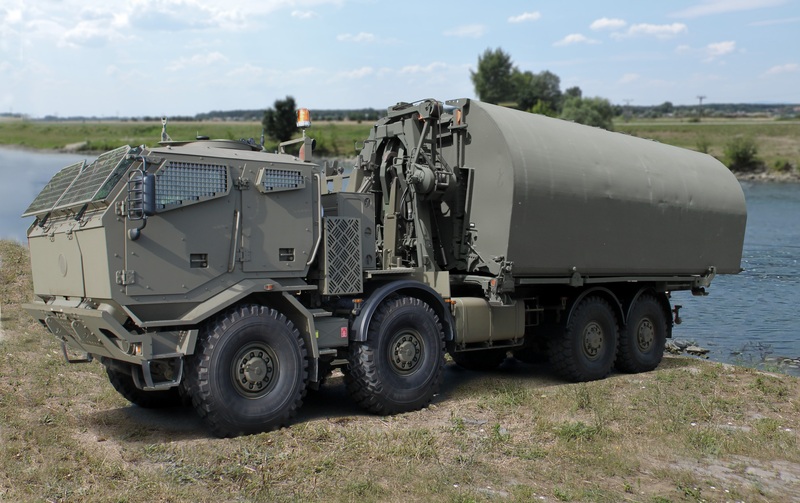
Picture: IRB pontoon bridge systems with high load capacity installed on new Tatra truck platform | EA
11. GDELS is your traditional partner, so it is no surprise that you have also been cooperating in the field of bridge laying vehicles production. To what extent would your company or other Czech companies be involved in the production and technical support of IRB systems if the Czech Army replaced them with the technology used today?
Many components, especially pontoons or boats, are produced abroad by well-established manufacturers with their own quality production. It is illusory to assume that several dozens of pontoon systems for the Czech Army could be produced in the Czech Republic. That would be economically unbearable for taxpayers. From the Czech point of view, the most important are the vehicles serving as carriers for the whole set – the Tatra trucks - which are widely used by the Czech Army. In this project, our company plays primarily the role of a system integrator, which can not only acquire individual parts, but also integrate them into a functional whole. Our role is to provide for the overall communication of the system, fine-tuning and delivering products exactly according to the requirements of the Army of the Czech Republic. Not to forget, our company also provides the facilities and skills to ensure the full operation of the entire life cycle of the products in the Czech Republic.
12. What would the introduction of the IRB system into the Czech army military equipment mean? What changes would it bring for the army combat engineer units and ground forces as a whole?
First of all, it should be noted that the PMS kit currently in use is a high-quality product that meets all the requirements of our military. However, both Tatra T 815 vehicles produced about 30 years ago and pontoons produced 40 years ago have been ageing. The quality maintenance can extend lifetime of individual components to a certain extent, and in fact, a partial upgrade of the PMS system is imaginable. However, it is not possible to change the basic technical and operational parameters of pontoons that were manufactured to correspond to the military vehicles operated at the time of the development of the PMS system. Those vehicles were much lighter than the future vehicles planned for the Czech Army and the contemporary equipment of our NATO allies. In fact, the PMS is classified as MLC 60 (with load capacity of approximately 60 tonnes), while IRB falls into the MLC 80 categories for tracked vehicles and MLC 96 for wheeled vehicles.
For engineer units, the IRB would mainly bring better overall potential, interoperability with NATO allies, and the safety of pontoon bridge crews in armoured vehicle-carrier cabins. For the Czech Army ground forces as a whole, the IRB system would primarily mean removing tactical-operational limits imposed by the current engineer bridge systems in use. As a matter of fact, they do not have sufficient load capacity for the new vehicles the army will acquire in the coming years, nor do they meet the requirements and standards of the NATO. The IRB is conceptually very similar to the PMS kit. Not to forget, in cooperation with GDELS we also provide for the M3 bridge system as an alternative.
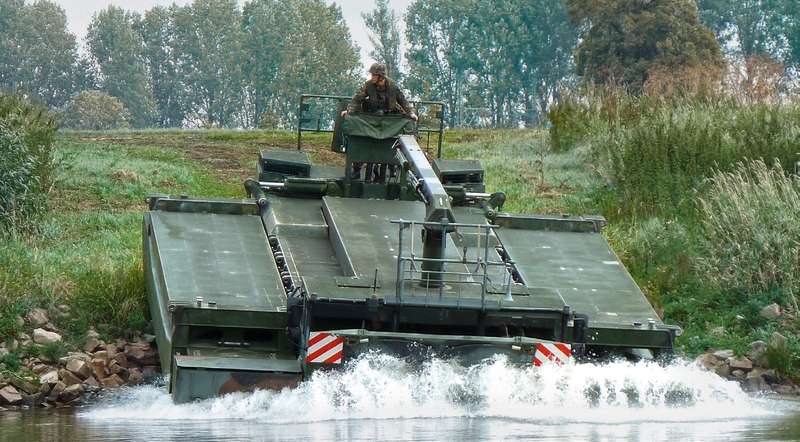
Picture: M3 amphibious vehicle | EA
13. You exhibited the M3 amphibious vehicle at IDET 2019; can you tell us more about this product? What does make it special?
The M3 vehicle is a very interesting machine. It is basically a self-propelled pontoon because it combines a land vehicle, a pontoon and a ship. On land, the M3 moves on the wheeled chassis, and it functions like a pontoon on water. It can then connect with other vehicles of the same type to form a ferry boat or floating bridge. This all very quickly and with minimal need of manpower. In fact, eight M3 vehicles and 16 crew member help build a 100-meter bridge in 10 minutes. This is considerably less time than with IRB and other solutions, but the M3 systems are significantly more expensive as well.
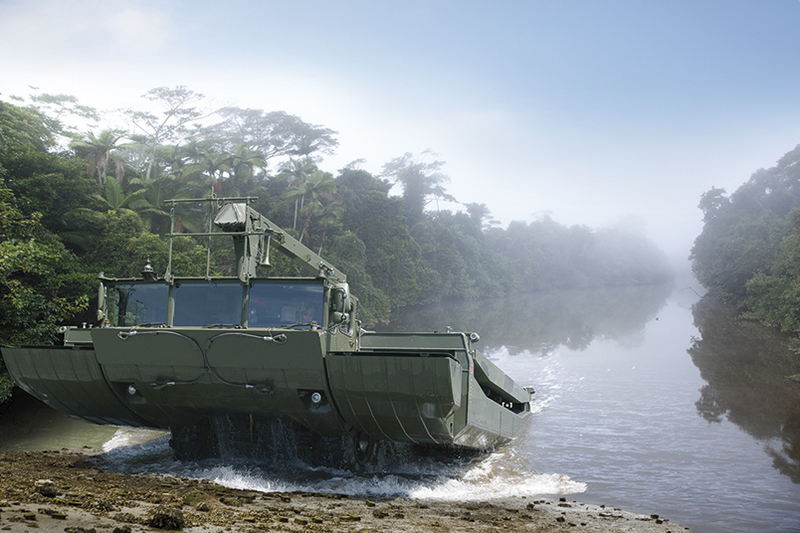
Picture: M3 amphibious vehicle | EA
14. Do you cooperate with GDELS in the supply of bridge systems and vehicles to global customers?
Yes, this cooperation is very successful. With regard to customers´ privacy I cannot be specific, but we can mention, for example, the supply of an IRB system on Tatra Terra chassis to Brazil and a M3 vehicles for Indonesia last year.
















.JPG)
.JPG)
.JPG)
